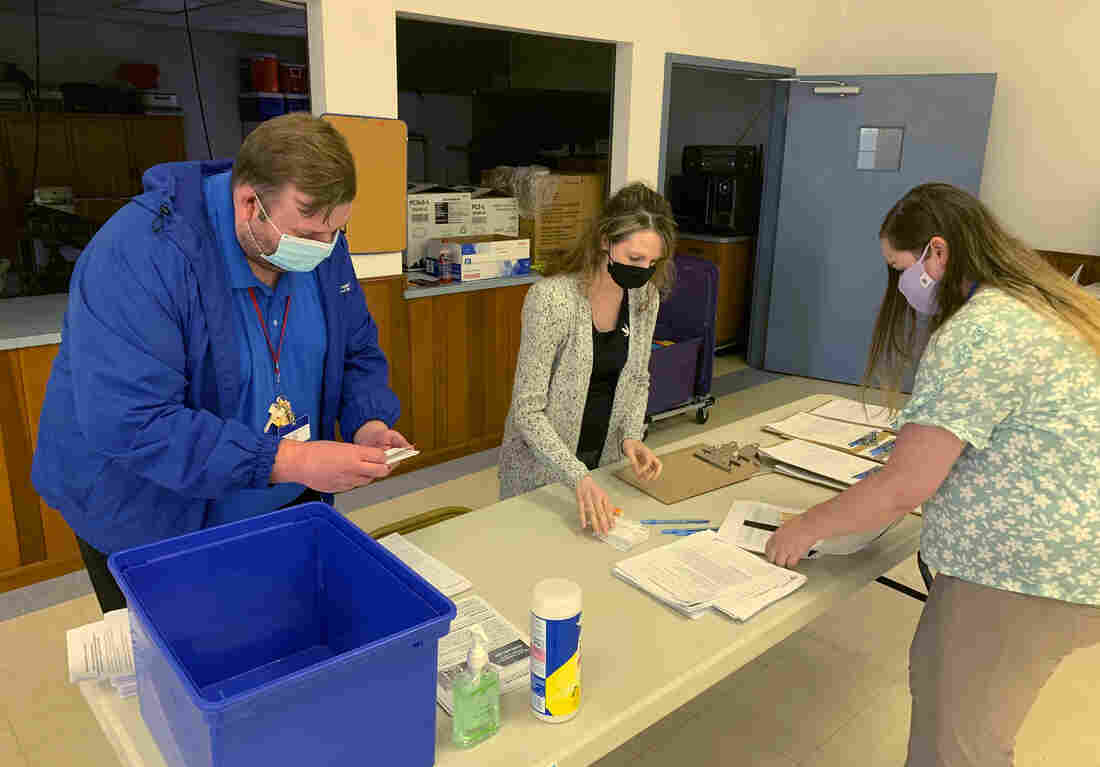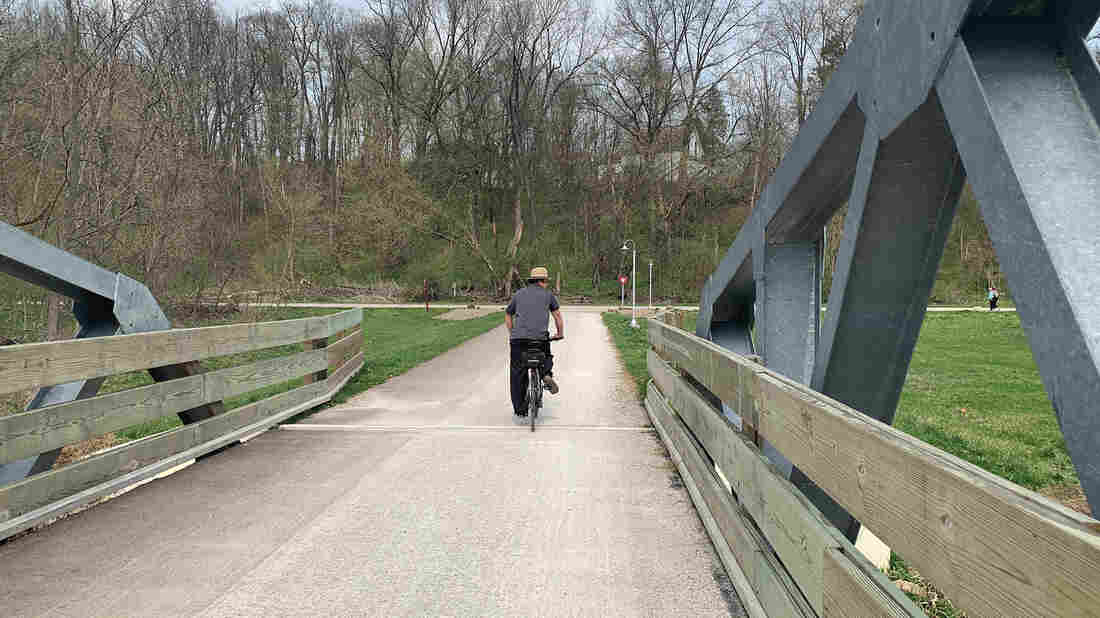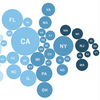Amish In Ohio Aren’t Getting Vaccinated Despite High COVID Infections, Deaths : Shots – Health News

Holmes County health department staff members (from left) Michael Derr, Jennifer Talkington and Abbie Benton prepare materials for a COVID-19 vaccine clinic inside St. Peter’s Catholic Church in Millersburg, Ohio, on April 8. Anna Huntsman/WCPN hide caption
toggle caption
Anna Huntsman/WCPN

Holmes County health department staff members (from left) Michael Derr, Jennifer Talkington and Abbie Benton prepare materials for a COVID-19 vaccine clinic inside St. Peter’s Catholic Church in Millersburg, Ohio, on April 8.
Anna Huntsman/WCPN
The Amish communities of northeast Ohio engage in textbook communal living. Families eat, work and go to church together, and through the pandemic, mask wearing and social distancing have been spotty. That has meant that these communities have experienced some of the state’s highest rates of infection and deaths.
Despite this, health officials are struggling to get residents vaccinated. Holmes County, where half of the population is Amish, has the lowest vaccination rate in Ohio, with just 10% of its roughly 44,000 residents fully vaccinated.
Less than 1% of Amish have received any doses of vaccine, according to Michael Derr, the county’s health commissioner.
In an effort to increase that number, health officials are holding vaccination clinics in rural areas. They’ve also reached out to bishops and community leaders to spread the word about the safety of the vaccines. Still, few Amish residents are showing up to the health department’s clinics.
Marcus Yoder, who lives in Holmes County, was born Amish and is now Mennonite and still has close ties to the Amish community. He says the few Amish who are getting vaccinated are doing so privately through doctors’ offices and small rural clinics – and, they are keeping it to themselves.
“There were Amish people getting the vaccination the same day I was … and we all kind of looked at each other and smiled underneath our masks and assumed that we wouldn’t say that we saw them,” Yoder says.
He says many Amish don’t want to get vaccinated because they already had COVID-19 and believe the area has reached herd immunity.
Another main driving force is “the misinformation about COVID itself — that it’s not more serious than the flu,” says Yoder, who runs a history center about the Amish and Mennonite. “They’re saying, ‘Well, it didn’t affect me that much. Look at all these old people who survived.’”

A man zips by on a walking and biking trail on a rainy day in Holmes County, Ohio, which is home to one of the largest settlements of Amish in the U.S. Anna Huntsman/WCPN hide caption
toggle caption
Anna Huntsman/WCPN

A man zips by on a walking and biking trail on a rainy day in Holmes County, Ohio, which is home to one of the largest settlements of Amish in the U.S.
Anna Huntsman/WCPN
Some Amish residents are skeptical of the safety and effectiveness of the vaccines, and anti-vaccination conspiracy theories also spread throughout the community. There is also a lack of awareness about the more contagious variants spreading across the country, Yoder says.
“I think we’re going to see some more cases in our community, unfortunately, because of this,” he says. “There simply is a lot of COVID news fatigue. They simply do not want to hear about it, and that’s really unfortunate.”
While some sort of herd immunity could explain why Holmes currently has a low incidence of new cases, Derr at the health department is concerned that those who previously had the virus may not be protected.
“As a region, we definitely surged over the winter, and we know that that happened about 90 days ago,” Derr says. “We’re primed and ready for another surge because we’re not vaccinating enough.”
Health officials in Indiana and Pennsylvania — which, combined with Ohio account for the largest Amish communities — also are ramping up outreach in heavily Amish areas. Local health departments in Pennsylvania’s Lancaster County, home to the largest Amish population in the country, are connecting with Amish bishops to try to spread the word about the vaccines.
The widespread reluctance to get vaccinated in Amish communities is not surprising to West Virginia University sociologist Rachel Stein, who studies Amish populations across the country.
“We as non-Amish are more on board with preventative medicine,” Stein says. “They certainly don’t have that mindset that we need to do things to stop this from happening.”
Instead, she says there’s an acceptance that people will get sick and get better – or not. While childhood vaccinations have increased in Ohio’s Amish communities in recent years, adults are still more hesitant, she adds.
“There’s oftentimes frequent breakouts of whooping cough in a settlement, and it’s just like … ‘This is happening now. We’re in whooping cough season, and so it’s time to deal with this sort of thing,’” she says.
In 2014, a measles outbreak spread rapidly through Ohio’s largely unvaccinated Amish communities. Even after this experience, many Amish residents still choose not to vaccinate their children against other diseases.
The low vaccination interest in Holmes County tracks national trends showing residents of rural areas are less likely to consider getting vaccinated.
A recent poll from the Kaiser Family Foundation found three in 10 rural residents will “definitely not” get the COVID vaccine unless it is mandated.
Yoder thinks the best path forward is to encourage Amish residents who did get the vaccine to talk openly about their positive experience getting the shots.
“I think that hammering people for not doing it will not get us anywhere,” Yoder says. “Some of the local business leaders have done very, very well at saying, ‘Look, let’s get the vaccination so we don’t have to wear masks in the future, so we don’t have to worry about social distancing as much in the future.’ And they’ve used that tact and that has been a healthy way to approach it.”
Derr, the Holmes County health commissioner, is trying to get business owners who employ Amish workers to encourage their staff to get the shot. Officials hope to eventually hold vaccine clinics at these businesses and take the shots to them, but not every business owner is on board with that yet, he says.
“People are going to listen to their friends and their family, people who they interact with more, and it’s going to be that telephone effect,” Derr says. “The more and more people we tell about it and the better experiences they have, word will get around.”
Derr expects more Amish will get vaccinated in the fall after the shots have been around for some time but worries that the community could see a spike in cases long before then.
This story comes from NPR’s partnership with Cleveland’s ideastream and Kaiser Health News.




